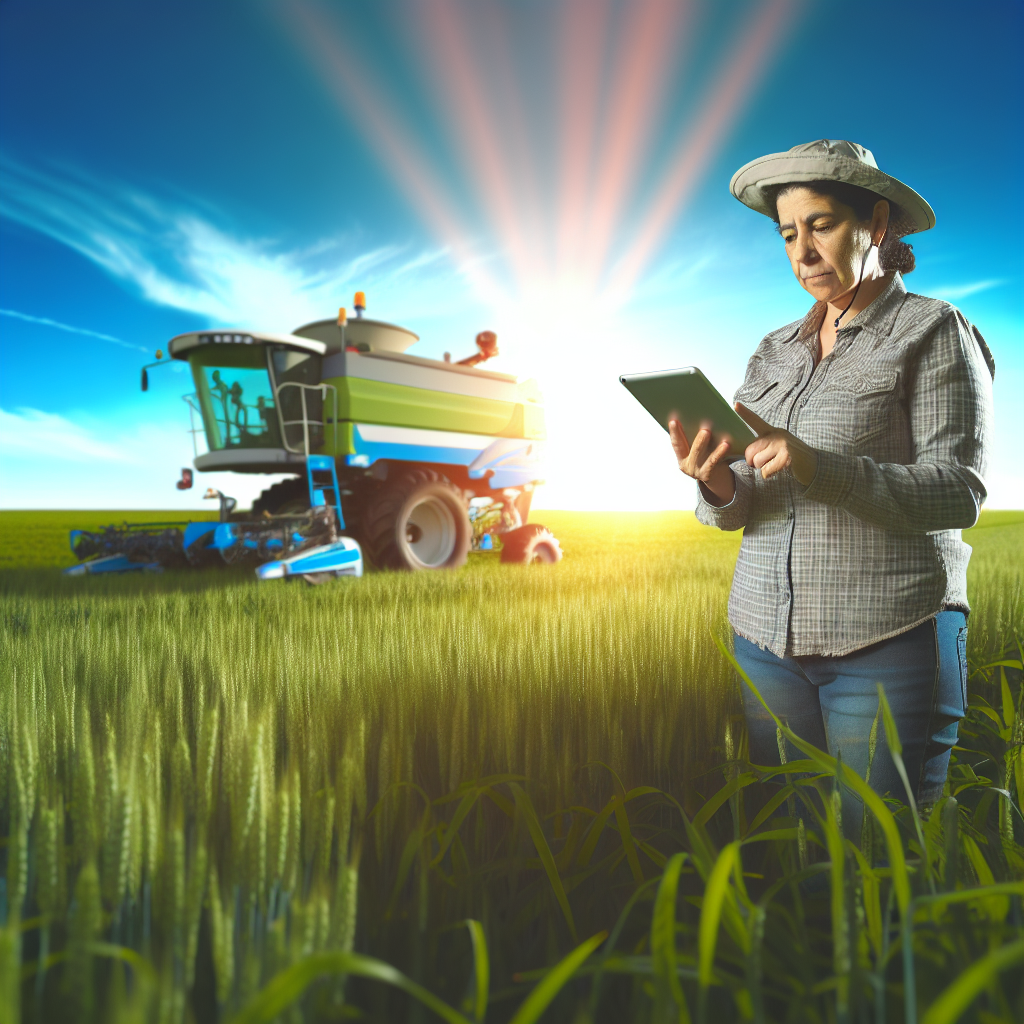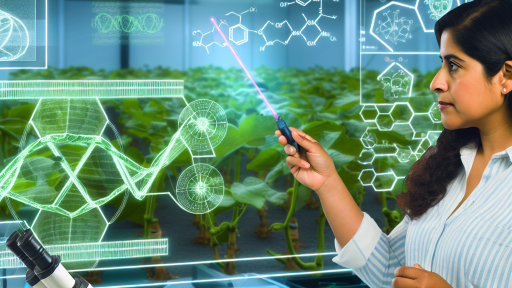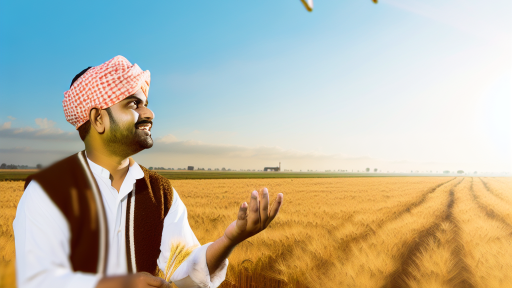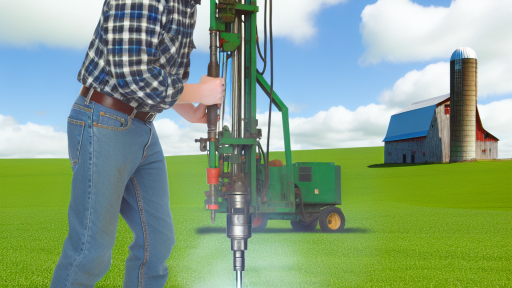Introduction to IoT in Agriculture
The Internet of Things (IoT) revolutionizes agriculture by enhancing precision farming techniques.
This technology integrates sensors, devices, and software to create smart farming systems.
As a result, farmers can access real-time data on their crops and livestock.
The insights gained from IoT applications lead to better decision-making.
Defining Precision Farming
Precision farming focuses on optimizing field-level management practices.
This approach uses technology to monitor and manage variability in crops.
Farmers apply different inputs for specific areas, improving efficiency.
Consequently, this results in higher yields and reduced environmental impact.
Role of IoT in Precision Farming
IoT devices collect and analyze essential data from the agricultural landscape.
Sensors detect soil moisture, temperature, and nutrient levels.
Moreover, drones and imaging technology provide aerial views of fields.
This data empowers farmers to respond quickly to changing conditions.
Benefits of Incorporating IoT
Integrating IoT into farming enhances productivity and sustainability.
- First, it minimizes resource waste through targeted application.
- Second, it reduces operational costs by improving resource management.
- Additionally, it increases crop quality through precise monitoring.
Real-World Applications
Several companies showcase the effectiveness of IoT in agriculture.
Farmers use smart irrigation systems to optimize water usage.
Transform Your Agribusiness
Unlock your farm's potential with expert advice tailored to your needs. Get actionable steps that drive real results.
Get StartedCompanies like AgriTech Innovations harness advanced analytics for crop growth.
These practical implementations demonstrate the potential of IoT technology.
Key IoT Technologies Used in Precision Farming
Sensors
Sensors are pivotal in precision farming techniques.
They gather critical data about crop health and soil conditions.
Farmers can monitor moisture levels and temperature in real-time.
This data enables them to make informed decisions.
Moreover, soil sensors help optimize fertilizer usage.
Consequently, this reduces waste and enhances crop yield.
Drones
Drones offer a bird’s-eye view of the agricultural landscape.
They can assess crop health through aerial imagery.
This technology allows farmers to identify problem areas quickly.
Farmers can also use drones for precise spraying of pesticides.
As a result, they minimize chemical use and protect beneficial insects.
Drones thereby enhance overall farm efficiency.
GPS Technology
GPS technology plays a crucial role in modern farming.
It helps farmers precisely map out their fields.
This technology enables accurate navigation for machinery.
As a result, farmers conserve resources and increase productivity.
Additionally, GPS aids in planting and harvesting at optimal times.
Farmers benefit greatly from strategic land management.
Benefits of IoT in Soil Monitoring
Enhancing Soil Health Management
The Internet of Things (IoT) transforms soil health management.
Smart sensors collect real-time data on soil conditions.
This data includes moisture levels, nutrient content, and pH balance.
Farmers receive instant insights into soil health.
Showcase Your Farming Business
Publish your professional farming services profile on our blog for a one-time fee of $200 and reach a dedicated audience of farmers and agribusiness owners.
Publish Your ProfileConsequently, they can make informed decisions about soil treatment.
Increasing Crop Yield Through Data Analytics
IOT technology significantly boosts crop yields.
Real-time data analytics enable timely interventions.
Farmers can optimize irrigation schedules based on soil moisture data.
As a result, they use water resources efficiently.
This efficient usage promotes healthier crops and higher yields.
Implementing Precision Agriculture Techniques
Precision agriculture benefits immensely from IoT integration.
Farmers can apply fertilizers and pesticides more effectively.
Targeting specific areas reduces chemical usage and costs.
IoT also allows for monitoring pest movements continuously.
This proactive approach minimizes crop damage and losses.
Facilitating Remote Monitoring Capabilities
Remote monitoring changes how farmers manage their fields.
IoT devices enable farmers to check soil conditions from anywhere.
This convenience allows for adjustments without being physically present.
Consequently, farmers can respond quickly to changing conditions.
Thus, they increase overall productivity and efficiency.
Learn More: Connecting Farmers To Global Markets With Blockchain Technology
Irrigation Management
Optimizing Water Usage
Irrigation management plays a crucial role in farming efficiency.
IoT devices enhance water management through real-time monitoring.
These devices collect data on soil moisture levels.
Farmers receive timely alerts about watering needs.
This leads to more precise irrigation scheduling.
Consequently, overwatering and water waste decrease significantly.
Improving Efficiency
Efficiency in irrigation also improves crop yields.
Sensors provide insights into plant water requirements.
Farmers can adjust irrigation based on specific crop needs.
As a result, crops receive optimal hydration.
This practice supports healthier plant growth and better harvests.
Advantages of IoT in Irrigation
- Reduced water consumption through precise monitoring.
- Cost savings on water bills and resources.
- Minimized labor as automation takes over routine tasks.
- Increased crop productivity and profitability.
Each advantage contributes to sustainable farming practices.
Case Studies of Successful Implementations
Farmers worldwide leverage IoT for improved irrigation management.
For instance, Green Valley Farms utilized soil moisture sensors.
They achieved a 30% reduction in water usage.
Meanwhile, Sunny Acres implemented smart controllers.
This led to an increase in their corn yield by 20%.
Such examples illustrate the significant impact of IoT technology.
Find Out More: AI Technologies Transforming Agriculture
Livestock Monitoring: Enhancing Animal Health and Productivity with IoT
Introduction to IoT in Livestock Monitoring
Internet of Things (IoT) technology revolutionizes livestock monitoring.
This innovative approach provides real-time data about animal health.
Farmers can make informed decisions based on accurate information.
Benefits of IoT for Animal Health
IoT enables continuous monitoring of livestock health conditions.
Showcase Your Farming Business
Publish your professional farming services profile on our blog for a one-time fee of $200 and reach a dedicated audience of farmers and agribusiness owners.
Publish Your ProfileWearable devices track vital signs like temperature and heart rate.
With this data, farmers can detect illnesses early.
Early intervention improves recovery rates significantly.
Moreover, it reduces veterinary costs for farmers.
Improving Productivity with IoT
IoT technology enhances overall livestock productivity.
By monitoring feeding habits, farmers optimize nutrient intake.
This leads to better weight gain and growth rates.
Additionally, IoT enables precise breeding management.
Farmers can identify optimal breeding times for higher yields.
Real-World Applications of IoT in Livestock Management
Many farms are adopting IoT solutions to enhance operations.
For instance, SmartFarm Technologies offers a comprehensive monitoring system.
They provide devices that track animal locations and behaviors.
Similarly, AgriTech Innovations develops health monitoring wearables.
These applications illustrate how IoT is transforming livestock management.
Challenges to Implementing IoT Solutions
Despite the benefits, challenges exist in adopting IoT technology.
Initial investment costs can be a barrier for some farmers.
Additionally, farmers may require training to use IoT tools effectively.
Connectivity issues in rural areas can also impact performance.
Addressing these challenges is essential for widespread adoption.
The Future of IoT in Livestock Farming
The future looks promising for IoT in livestock farming.
Advancements in technology will likely reduce costs and improve efficiency.
We can anticipate more innovative solutions entering the market.
Farmers who embrace IoT will lead the way in sustainable farming practices.
Ultimately, IoT has the potential to shape the future of agriculture.
Uncover the Details: Maximizing Farm Profitability With Innovative Agri-Fintech Solutions
Pest and Disease Control: Utilization of IoT for Early Detection and Response
Introduction to IoT in Agriculture
The Internet of Things (IoT) revolutionizes agriculture today.
It enables farmers to monitor crops in real-time effectively.
This technology facilitates early detection of pests and diseases.
Real-Time Monitoring Solutions
IoT devices collect data continuously from farms.
Sensors placed in fields track environmental conditions.
These conditions include temperature, humidity, and soil moisture.
Moreover, they detect unusual patterns that indicate pest presence.
Early Detection of Pests
Early detection helps prevent significant crop losses.
Smart traps equipped with IoT technology alert farmers instantly.
These traps use pheromones to attract pests effectively.
When pests are trapped, the data is sent to farmers’ devices.
Automated Response Systems
IoT systems can trigger automatic responses to threats.
For example, drones can spray pesticide directly on affected areas.
This targeted approach minimizes chemical use and protects beneficial insects.
Automated alerts inform farmers about the need for intervention.
Showcase Your Farming Business
Publish your professional farming services profile on our blog for a one-time fee of $200 and reach a dedicated audience of farmers and agribusiness owners.
Publish Your ProfileData Analysis for Informed Decisions
Data collected by IoT devices undergoes rigorous analysis.
Farmers can identify trends and patterns over time.
Advanced algorithms predict potential outbreaks based on data.
Consequently, farmers make informed decisions quickly.
Collaboration with Experts
Farmers can share data with agronomists and pest control experts.
This collaboration enhances pest management strategies.
Farmers receive real-time advice tailored to their specific conditions.
IoT’s Impact on Agriculture
IoT technologies significantly enhance pest and disease control.
Farmers benefit from improved yields and sustainability.
The future of agriculture relies on these innovative solutions.
Gain More Insights: The Future Of Crop Disease Detection Technologies In Agricultural Practices

Data Analytics and IoT: Turning Raw Data into Actionable Insights for Farmers
The Role of IoT in Agriculture
The Internet of Things (IoT) revolutionizes modern agriculture.
It connects various devices to gather real-time data.
This data helps farmers monitor crop health and environmental conditions.
As a result, farmers can make informed decisions quickly.
Data Collection Techniques
Farmers use sensors to collect data from their fields.
These sensors measure soil moisture, temperature, and humidity.
Drones also capture aerial images for analysis.
This multi-faceted data collection enhances precision farming techniques.
Transforming Data into Insights
Raw data must be analyzed to provide useful insights.
Data analytics tools process this information effectively.
Farmers can identify patterns and trends in their data.
This enables them to optimize resource allocation efficiently.
Improving Crop Management
With actionable insights, farmers can enhance crop management strategies.
They can schedule irrigation more accurately based on moisture levels.
Moreover, they can apply fertilizers precisely at optimal times.
This reduces waste and environmental impact significantly.
Predictive Analytics in Farming
Predictive analytics offers farmers a glimpse into future conditions.
Using historical data, farmers can forecast crop yields.
This helps them plan their planting and harvesting schedules effectively.
Additionally, it aids in adjusting strategies based on predicted weather patterns.
Benefits of Data-Driven Decisions
Data-driven decisions lead to increased efficiency and productivity.
Farmers reduce costs and maximize output through smart planning.
These efficiencies contribute to a more sustainable farming approach.
Furthermore, informed decisions enhance overall food security.
Real-World Applications
Many companies are embracing IoT technology in agriculture.
For example, AgFunder utilizes IoT systems to improve crop yields.
Additionally, PrecisionHawk offers drone analytics for better insights.
These companies showcase the potential of IoT in enhancing farming practices.
Challenges in Implementing IoT Solutions
Despite the benefits, farmers face challenges in IoT adoption.
Showcase Your Farming Business
Publish your professional farming services profile on our blog for a one-time fee of $200 and reach a dedicated audience of farmers and agribusiness owners.
Publish Your ProfileHigh initial costs can deter some from implementing smart technologies.
Furthermore, data security concerns may inhibit trust in IoT systems.
Thus, addressing these challenges remains crucial for widespread adoption.
Case Studies: Successful Implementation of IoT in Precision Farming Across Different Regions
North America: Smart Irrigation Systems
In California, farmers adopted smart irrigation systems integrating IoT technology.
These systems monitor soil moisture levels in real-time.
Consequently, they optimize water usage and enhance crop yields.
The results demonstrate a significant reduction in water consumption.
Moreover, this approach improves sustainability in water-scarce areas.
Europe: Precision Livestock Farming
In Denmark, farmers implemented precision livestock farming using IoT devices.
Here, wearables track animal health metrics consistently.
This innovative technology allows for early disease detection.
As a result, livestock productivity increases while reducing antibiotic use.
Additionally, farmers experience heightened animal welfare standards.
Asia: Smart Greenhouses
In Japan, smart greenhouses utilize IoT sensors to monitor environmental conditions.
These include temperature, humidity, and light levels.
By automating controls based on sensor data, growers maximize efficiency.
This technology enables year-round production of high-quality vegetables.
Consequently, farmers can meet the increasing demand for fresh produce.
Africa: IoT-Enabled Pest Control
In Nigeria, farmers leverage IoT technology for pest control solutions.
Professionals use sensors to detect pest populations in real-time.
This targeted approach minimizes pesticide usage significantly.
Furthermore, it leads to healthier crops and a cleaner environment.
The success showcases the power of technology in overcoming agricultural challenges.
Challenges and Considerations
Addressing Barriers to IoT Adoption in Agriculture
IoT adoption in agriculture faces several unique challenges.
One significant barrier involves the high cost of technology.
Many farmers may struggle to afford the initial investment.
In addition, the return on investment can be uncertain.
Another challenge is the lack of technical expertise among farmers.
Without adequate training, farmers may find it difficult to use IoT solutions effectively.
Moreover, connectivity issues can hinder IoT implementations.
Rural areas often encounter limited internet access, complicating data transfer.
Data privacy and security concerns further complicate IoT usage.
Farmers worry about unauthorized access to sensitive information.
Encouraging Collaboration and Knowledge Sharing
Collaborative solutions can help mitigate these barriers.
Industry partnerships can provide farmers access to shared resources.
Additionally, government programs can offer subsidies or grants.
This financial assistance aids farmers in adopting new technologies.
Knowledge sharing initiatives enhance technical training opportunities.
Webinars and workshops can introduce IoT concepts and benefits.
Networking among farmers fosters a supportive community for learning.
Showcase Your Farming Business
Publish your professional farming services profile on our blog for a one-time fee of $200 and reach a dedicated audience of farmers and agribusiness owners.
Publish Your ProfilePromoting Accessibility and Affordability
Making IoT solutions affordable is essential for wider adoption.
Developers should focus on creating cost-effective options.
This can include scalable solutions catering to small and large farms.
Offering financing options can also reduce the burden on farmers.
Furthermore, simplifying technology can enhance usability.
Many users will benefit from intuitive interfaces designed for ease of use.
Building Trust and Ensuring Data Security
Building trust is crucial for successful IoT implementation.
Farmers need assurance about the security of their data.
Developers must prioritize robust cybersecurity measures.
Transparent practices regarding data usage will instill confidence.
Regular updates and support can help maintain security standards.
Future Trends: The Next Evolution of IoT in Precision Farming Techniques
Integration of AI and Machine Learning
Artificial intelligence significantly enhances IoT’s capabilities in precision farming.
It allows for real-time data analysis and predictive insights.
Farmers can optimize their decisions based on intelligent algorithms.
This process leads to more accurate yield predictions and resource management.
Development of Smart Sensors
Smart sensors are becoming more sophisticated and cost-effective.
They can monitor soil conditions, weather patterns, and crop health.
Farmers will increasingly rely on these sensors for informed decision-making.
As a result, they can achieve greater efficiency and productivity.
Enhanced Connectivity with 5G Technology
5G technology promises faster data transmission and improved connectivity.
This development will support the increasing number of IoT devices on farms.
Consequently, farmers can receive real-time updates on their operations.
This immediate feedback will help them adjust strategies promptly.
Increased Focus on Data Privacy and Security
As IoT adoption grows, data privacy will become more critical.
Farmers must ensure their data is secure against cyber threats.
Investing in robust security measures will be essential for sustainability.
This focus will build trust in precision farming technologies.
Sustainable Practices Through IoT
IoT technologies support sustainable farming practices globally.
They enable precise resource allocation and reduce waste.
Farmers can employ these methods to conserve water and reduce chemical usage.
Adopting these practices will contribute to environmental preservation.
Collaborative Platforms for Farmers
Future IoT systems will foster collaboration among farmers.
Sharing data and resources will enhance collective knowledge.
This approach will empower farmers to tackle challenges together.
Such collaboration will lead to innovation and shared success in agriculture.
Additional Resources
Agriculture Technology | Precision Ag | John Deere US
Precision Farming: How IoT is Reshaping Modern Agriculture | Alok …




